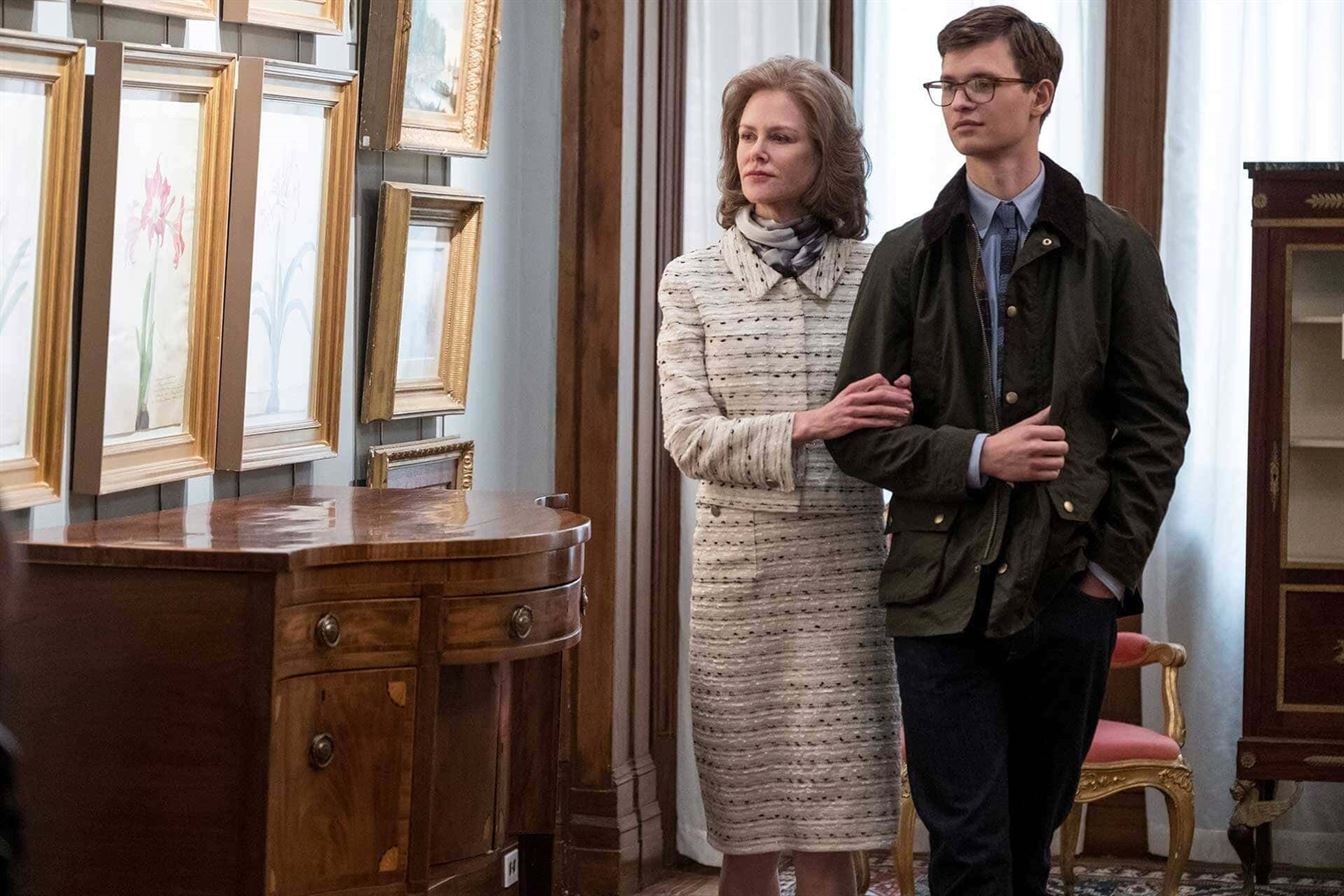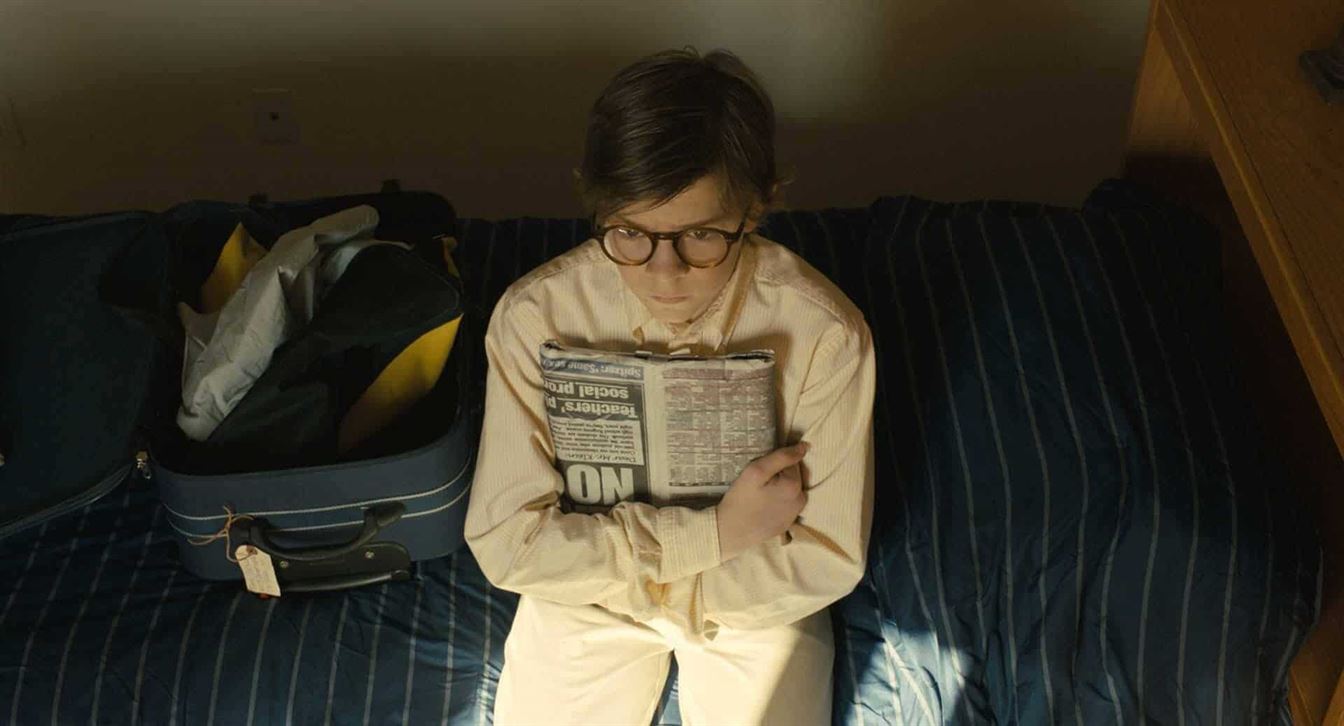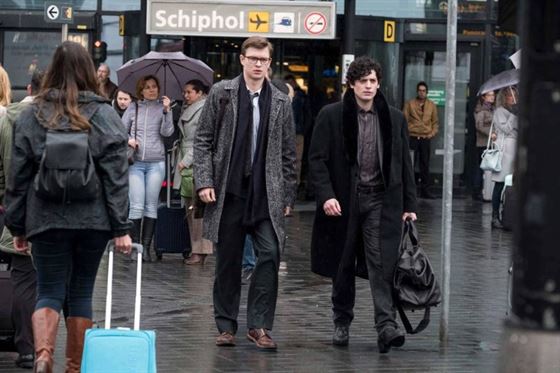One of the canniest decisions Donna Tartt made in the writing of her Pulitzer Prize-winning novel “The Goldfinch” was to get the inciting incident of the plot out of the way in the first 50 or so pages. The initial shock of that scene allows us to experience the main character’s trauma with him, creating a thread of tension and an instant emotional hook.
The film version, on the other hand, disperses little fragments of this scene throughout the meandering and disjointed first half of the film. As soon as the viewer might get invested in a scene, the film cuts away to a flashback. It is the first of a series of baffling adaptational choices that take away much of what made the acclaimed novel so poignant.

Mrs. Barbour, played by Nicole Kidman and Theo, played by Ansel Elgort, apprise antiques.
Photo courtesy of Warner Bros. Pictures
The film follows Theo Decker in the aftermath of the art museum explosion that kills his mother. He encounters numerous colorful characters through the rarified air of upper-class New York and the seedy suburbs of Las Vegas: the Barbours, unsettling old-money family friends, Hobie, a gentle antiques restorer and Boris, the wild Ukranian boy who forms a special bond with Theo.
Few of the film’s characters feel as vivid as they should. No one seemed willing to run with their portrayal of their character, most likely in the name of realism. “The Goldfinch” would be a much more entertaining movie if, for example, Nicole Kidman, who plays Mrs. Barbour, had been directed to make bolder choices in her portrayal of an elite matriarch and appreciator of the arts. The one standout performance comes from Oakes Fegley, who plays young Theo. Fegley does much of the emotional heavy lifting in the first half of the film.

Young Theo, played by Oakes Fegley, in the aftermath of the attack at the museum.
Photo courtesy of Warner Bros. Pictures
The uneven pacing makes it even harder to get emotionally invested from the outset. Similar to the book, the film starts with a reflective adult Theo, played by Ansel Elgort, thinking about how his mother’s death impacted his life. Instead of flashing back to her death, however, the film flashes back to a random point afterward.
The order of the scenes in the first half seems arbitrary, revealing enough at a time for the audience to understand why things are happening, but not enough that they know why they should care. The film switches to a more logical scene order about halfway through, at which point it becomes significantly more watchable. However, it still suffers from including every subplot from the book and fleshing out.
Despite the uneven pacing, some moments and relationships manage to shine through. The relationship between Theo and Boris, played by Finn Wolfhard, as teenagers is as tender as it is dysfunctional. When they meet again as adults, the emotionally vacant older Theo actually manages to crack a smile. Adult Boris, played by Aneurin Barnard, spends most of his screen time gazing at Theo. Their relationship is a bright spot of interest in an otherwise emotionally jumbled film.
The movie also looks beautiful, expertly shot by cinematographer Roger Deakins. Much of the film exists in a palette of soft cream backdrops, golden lights and blue-gray accents: the approximate palette of the titular painting. There are shots in the film that look like paintings in their own right. The cinematography fits beautifully into a plot about the significance of art.
Taken as a whole, the movie is more of a letdown than a disaster. Adapting Donna Tartt’s quasi-romantic behemoth of a novel was never going to be easy, but the choices made in this adaptation do not help matters. Taking the scenes out of sequential order did nothing to make the story work cinematically. Greater stylization, bolder direction and finding a plot to streamline might have done so.
For diehard fans of the book, or those who want to go to the movies right now but aren’t interested in killer clowns, this film might be worth watching. But overall, this “Goldfinch” simply doesn’t sing.



